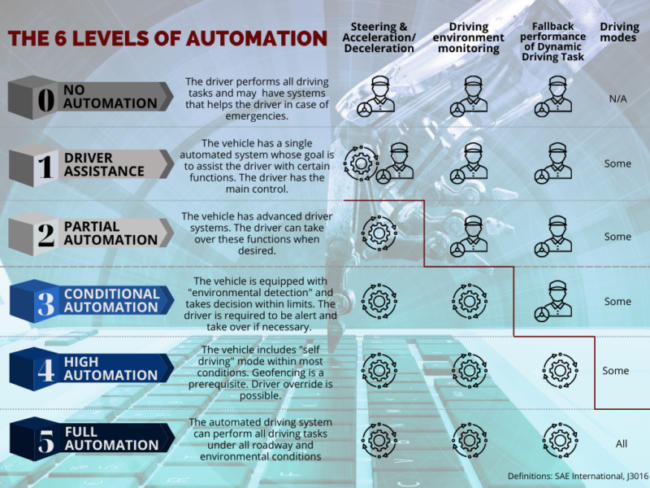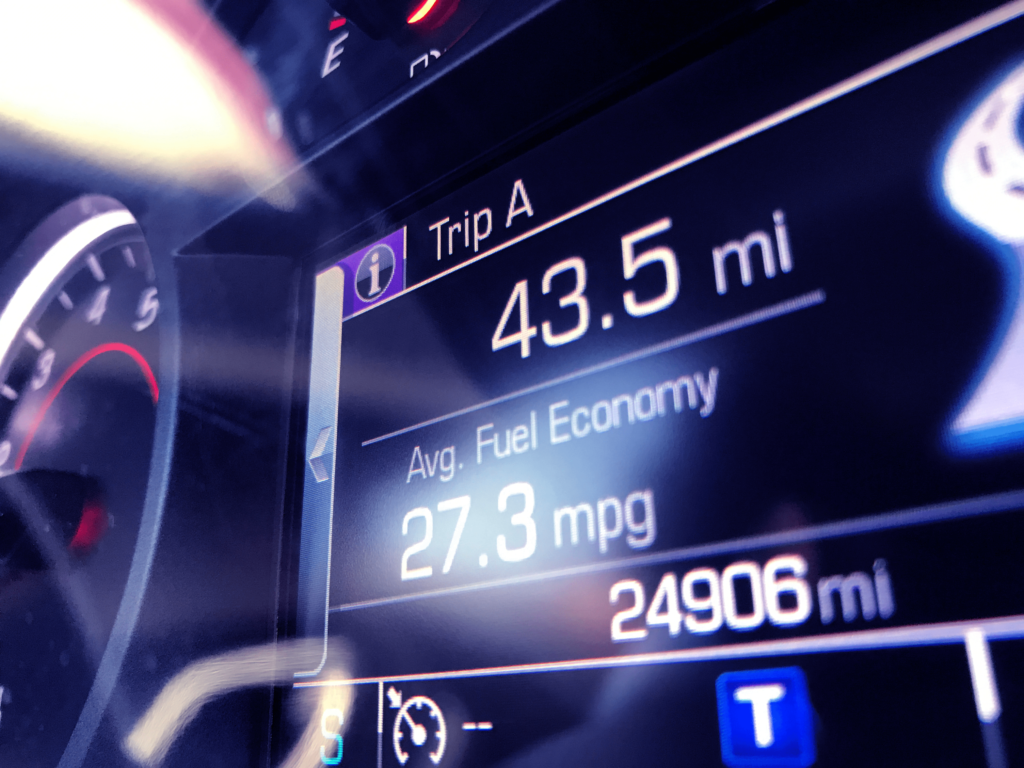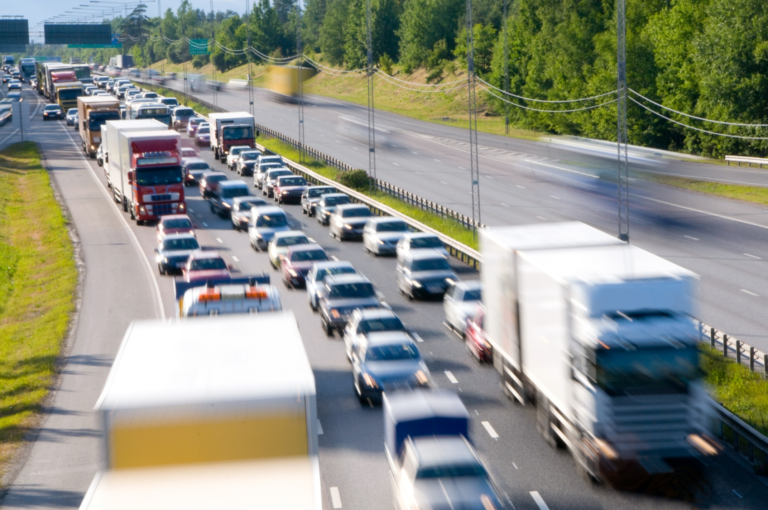The future of long-haul trucking and automation

Autonomous vehicles were named as the most impactful technology in the near future and as unions are protesting against their mass implementation due to widespread job killings, it is vital to ask how this technology will impact the long haul trucking sector.
What are autonomous trucks and how do they affect truck drivers?
Self-driving vehicles, foreseen to become part of Industry 4.0, in combination with the European technology platform ManuFuture1 envisioning self-driving mobile platforms by 2030 raises concerns on what would happen with the truck driver profession. Before we proceed to answering this question, let us establish what a self-driving vehicle is. To distinguish whether a vehicle is self-driving, one needs to look at the level of automation of the said vehicle. Currently, the established categorization for automation is the one of SAE, which has six levels:
- Level 0: No Automation
Here, the driver performs all driving tasks, and the presence of systems relates only for the purpose of possible emergencies. - Level 1: Driver Assistance
Within level 1 there is an established automated system, which has the goal to assist the driver with some functions, such as cruise control. The driver primarily controls the vehicle. - Level 2: Partial Automation
The vehicle has advanced driver assistance systems (ADAS) and can employ functions such as steering and acceleration/deceleration. The driver is able to take over these functions when desired. Tesla’s Autopilot is a typical example.

- Level 3: Conditional Automation
At level 3 the vehicle is equipped with “environmental detection” and can operate within certain parameters. However, the driver is still required to be alert and take over if necessary. Examples of conditional automation include “Traffic Jam Pilot” of the Audi A8L, though in the US it is still classified as level 2. - Level 4: High Automation
This is the first level where “self-driving” mode is possible almost without the need of the driver. It operates within a wider area of parameters and conditions. Geofencing is a prerequisite and driver override is still a possibility. Most current self-driving trucks are at this level of automation. - Level 5: Full automation, i.e. self-driving vehicle
Here, the vehicle employs all driving tasks without the need of a driver to interact. The vehicle is completely autonomous and can operate safely within all roadway and environmental conditions.
Despite that level 3 is the first level of the automated system, only at level 4 and 5 is the driver rather unnecessary in the cabin. Three crucial questions emerge:
- Will a potential mass implementation of level 4 and 5 of automation erase the truck driver profession?
- Is mass implementation of level 4 and 5 of automation in the trucking industry viable in the near future?
- What are the consequences of such mass implementation and what are the possibilities?
While autonomous technology has the ability to substitute certain tasks employed by truck drivers, researchers as well as experts point out that not all of the driver’s tasks can be explicit and codifiable in such a way that they can be automated. This is due to the nature of some of the non-driving tasks, such as loading/unloading, customer service, compliance, and safety checks, which still require human interference. On the other side, security concerns regarding freight theft and potential cyberattacks also are a challenge that are a potential inhibitor for the mass implementation of autonomous trucks. One of the main benefits of human drivers are the purpose they serve outside their driving – they secure the load, in case of emergencies, such as broken tire or vehicle malfunctioning, it is the driver that ensures the truck is operating well.

During cross-border travel the driver presents all document to custom authorities and in case of inspection they must resolve them. Although autonomous truck refueling is available as a technology, where a robotic arm hooks up a truck to a diesel tank to refuel, the technology needs to catch up with cost effectiveness and demand. As many of the truck drivers are responsible for a part of the customer service, this may mean that even if autonomous trucks are implemented, there might still be a role for the truck drivers. It is challenging to predict whether the truck driver profession will go extinct in the near future. However, level 4 automation has the “potential to displace demand for a specific subset of drivers – those driving long-haul point-to-point routes” as not all segments of the market are suited for automation. This means that only part of the drivers will be eliminated from the labor market, while others would just take over another supportive function. The majority of the heavy truck industry includes travels in local geographic areas, that include short hauls and multiple loading and deliveries. This part of the industry is expected to be automated much later with some tasks not being able to be displaced at all as suggested by Kane and Tomer (2017). For example, there are expected to be trucking support services which include the loading, unloading and safety check, while tasks like customer service, taking delivery, ensuring accuracy of pick-up and delivery will still be performed by drivers. It is expected that over time when the local freight transport become more dissimilar from the long-haul one that some of these tasks will be taken over by “the first- and last-mile” services. Many of the self-driving company leaders say that their goal is to focus on supporting the industry, solve the labor shortage and take over the ”uncomfortable” routes such as night driving. Currently, the testing of level 4 automation and truck platooning is focused on identical market segments – freeways, limited access roads, controlled access roads, which allow the vehicle to drive in easier to predict environment.
Consequences of automation in long-haul trucking
The consequences of automated self-driving trucks bear both positive and negative outcomes.
Increased safety
The majority of the road accidents are result of a human error (90% in EU, 94% in the US) and as such self-driving truck companies have taken the ambitious goal to limit accidents to a bare minimum. Autonomous vehicles (level 4 or above) are created to comply with the traffic regulations and due to their nature they do not get distracted, drowsy or intoxicated, which normally are a main inhibitor of the driving performance of human drivers. This shows a huge potential in benefit of the self-driving vehicles. Naturally, a great concern is how the autonomous system will make decisions on the road under different conditions and uncertainty, especially in the beginning when there will be both self-driving and human operated vehicles on the road. Therefore, currently most self-driving truck companies operate with a safety driver and an engineer or technician on board as simulations are not enough to test how

reliable the system is. This is due to the fact that no operational design domain (ODD), i.e. the conditions for safe operation description of the autonomous vehicles, is “immune to the occurrence of fatal collisions”. To back up the claim with statistical significance that autonomous driving systems prevent fatal road accidents researchers estimate the need of data, corresponding to over 16 billion kilometers driven on US terrain. The number for the European market is unclear, as most of the initial tests of self-driving vehicles are employed outside Europe. Moreover, with the EU having strong regulations, it would not be surprising if the number would be required to be even higher. In terms of safety performance, Waymo’s Driver was estimated to prevent 82% of the collisions and mitigate an additional 10%. In terms of accidents that reached the media, on May 5th, 2022, in Dallas, Texas, Waymo’s truck, operated in autonomous mode with a safety operator inside, was forced off the roadway due to another semi-truck entering their lane. The hit and run were not Waymo’s fault, and the safety operator suffered “moderate” injuries. The data for the accident was limited and questions were raised on the reporting mechanisms and how the public and law enforcement should tackle autonomous vehicles. In December 2021, TuSimple was the first company that did a 80 mile self-driving run without a safety driver inside, proving that self-driving trucks can operate rather safe as their system is developed to react 15 times faster than a human driver and the ability to see 30 seconds ahead. There are differences though in the way autonomous vehicles are approached in North America as opposed to in the EU. In a panel discussion Martin Lewerth from Scania Group revealed that their autonomous truck had to get a specific permission, similar to getting a driver’s license to get the right to run on public highways. The test was done with a supervision by a test engineer for safety reasons and a driver and this was the first in Europe test of the technology on a motorway with payload.
Improved fuel control – greener transport
Another upside of the self-driving trucks is an improved fuel control, that would minimize the environmental impact of the transport industry. With the EU introducing rules to vary charges for heavy-duty based on their CO2 emissions, the autonomous truck developers have approached this issue differently.
TuSimple’s autonomous system focused on optimizing their AI and after it was tested by the University of California San Diego, there was at least 10% higher fuel efficiency compared to a driver operated truck.
Plus, another self-driving truck developer, on the other hand, took an initiative with the global engine manufacturer Cummins to develop trucks that run on natural gas and further expanding their AI algorithms beyond diesel. With Compressed Natural Gas (CNG) engines the self-driving vehicles would operate near zero emission.
Even though electric vehicles have been on the rise, one of the biggest problems within electrical trucking is how costly it is to wait for drivers to charge the battery and how long the vehicle can drive before it needs to be recharged. Another possibility of the autonomous systems may be that electrical trucking will become more feasible from a business standpoint.

Labor cuts and the labor shortage issue
The truck driver shortage has become a great challenge for both haulers and the industry. In the EU there is around 400 000 shortage, whereas in the US it is around 80 000 for variety of reasons. In a survey by the International Road Transport Union 20% of the positions went unfilled in Eurasia in 2021. Attracting young people for that job is difficult due to perceived bad image and poor working conditions combined with insufficient pay. Even though the EU has progressively regulated the drive and rest times with the latest changes with the mobility package, many truck drivers get exploited and get recruited in other country with a significantly lower than the national industry pay.
Furthermore, the mobility package caused cost issues for transport companies as workers need to return to their home country once every eight weeks and this may push them to look for optimization in the face of self-driving trucks. If a unit costs more than a quarter million euro, then that means a self-driving truck is slightly more expensive than the high-end truck models which can go more than 180 000€. Considering that a self-driving truck is supposed to cut off the cost for a driver (ranging from as little as 500€ to 46 000€ per year, depending on the country), it seems that the companies who normally would be willing to upgrade their fleet, would be able to afford the self-driving trucks. This means that the biggest enterprises would be the first adopters of the technology, which will boost their competitive advantage.

However, not all companies would be able to afford such expense, as there are many truck driver entrepreneurs that have a small fleet or are still using older trucks. As most transport workers per 1000 people come from Eastern Europe with the highest amount being in Romania and Bulgaria, how would the economy of these countries be impacted if all of these workers are cut off.
Traffic congestion, cost optimization and increased demand
Even though the efficiency will increase, which some studies indicate to traffic optimization, that might not be the case. When a technology is highly efficient, the demand becomes induced. Induced demand posits that a unit of increase in efficiency results in increase in the consumption. A typical example within road infrastructure is that adding new lanes increases the traffic. Another result is the “rebound effect” that technical advancement that improve the fuel efficiency and decrease the per km fuel consumption cost lead to increase in vehicle usage. Autonomous trucks aim to decrease the rest times and maximize the use of the truck with a long-term goal of substituting the drivers, cutting down a big chunk of the transport costs.
Following the aforementioned principles and knowing that autonomous truck companies focus on fuel improvement and increasing the efficiency, this indicates that there will be an increase in vehicle usage. Moreover, with the cost saved from the drivers, the companies would get the chance to increase their fleet and improving the speed of the delivery. Consequently, when consumers get the opportunity of faster delivery, the demand for that would increase exponentially. By optimizing that the demand for faster deliveries would increase, which would snowball in increased demand for autonomous truck vehicles. Lastly, autonomous trucks are not coming alone. Autonomous vehicles, such as robotaxis and cars, are expected to increase their adoption exponentially. This will cause traffic congestion not just on the main streets, but also at the alternative routes as the AI would try to diverge from congested routes.

There are several factors that will play into the decision whether the truck driver profession would get extinct:
- How fast the technology evolves and how safe it is (technological concerns)
- National and International laws (political and legal concerns)
- Unions and the public opinion (ethical concerns)
We will explore them in part 2 of The future of long-haul trucking and automation, looking at the current players on the market and forecasts by experts.